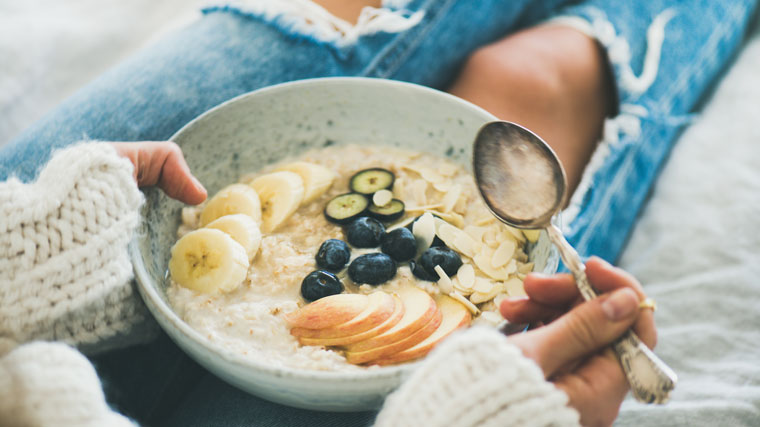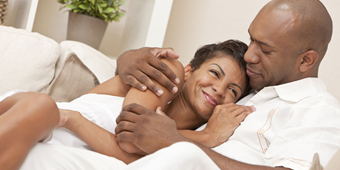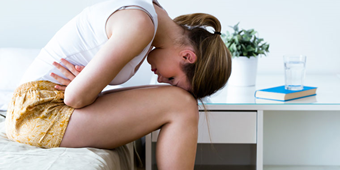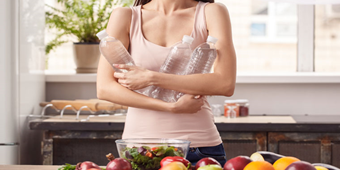Adjusting Your Diet Might Help Manage Overactive Bladder

Overactive bladder syndrome (OAB) is an issue faced by many people, but there are some adjustments you can make to your diet that you can take to help manage the condition.
OAB is when your bladder is more sensitive than it should be, says William Rush, MD. With OAB, the bladder starts to have more spasms as it fills up.
“The spasms can send messages to the brain saying ‘I have to go. I have to go now,’ and they can be very persistent and urgent and cause spasms strong enough that they can cause urine to come out,” Dr. Rush, who specializes in urogynecology, says. As many as 40 percent of women have OAB, says the American Urological Association.
OAB isn’t a disease, but rather a name given to a group of urinary symptoms, including the overwhelming urge to urinate more frequently than normal.
Within 24 hours you'd normally urinate seven times, including once at night, Dr. Rush says. However, he adds that frequency is subjective. Even if someone’s amount of urination is in the normal range, they might feel it is too frequent, and it can be a real bother to them.
Symptoms of OAB include:
- Feeling a sudden urge to urinate and having difficulty controlling it
- Having urge incontinence, which is having an urgent need to urinate followed by involuntary urination
- Frequent urination, which means more than eight times in a 24-hour period
- Waking two or more times a night to urinate
There are a variety of issues that can cause bladder control problems, such as OAB. Those issues include:
- Alcohol and caffeine consumption
- Excess weight
- Infection
- Medications
- Nerve damage
- Weak bladder muscles
OAB can affect anyone, but it is most common among women in their 40s, 50s, and 60s, Dr. Rush says.
Dr. Rush also wants women to understand the connection between their diet and OAB. By making some adjustment to what they eat or drink, he says women can help improve their OAB symptoms.
Drinking too many fluids is one problem Dr. Rush says he sees.
“Sometimes people are coming in, and they are drinking 80 oz. to 100 oz. a day,” he says. “There are myths out there that say a person needs 64 oz. in a day, but there is not a lot of scientific evidence toward that. You really only need 40 oz. to 50 oz. total fluid in a day – and there is fluid in a lot of things, like soup.”
Though Dr. Rush says it’s OK to drink a lot of water, he reminds women to be prepared to urinate more if they are going to drink a lot.
Many women, however, aren’t using water to get in more fluid ounces for the day, he says.
“A lot of people are drinking diet drinks, and anything with artificial sweetener is harmful to your stomach lining and very tough on your bladder lining,” Dr. Rush says. “Your body doesn’t really know how to process artificial sweeteners. On top of irritating the bladder, when they get there, they are telling the kidneys to make more urine, and you have even more than usual.”
Dr. Rush recommends not cutting out your favorite drinks completely, but having them in moderation to help manage OAB symptoms.
“An 8 oz. cup, or even 12 oz. of caffeinated drink that has no calories, by itself, is probably good for you. It is when people are having three or four or five cups a day that it can be a problem,” he said. “But a cup or a cup and a half of coffee, for example, is probably good for you.”
When women have a concern about how much they urinate, Dr. Rush says he first talks to them about their diet. He recommends limiting fluid intake if someone is drinking much more than necessary, and also recommends adding sources of fiber, which can help keep the digestive and urinary tract running correctly.
Women should eat between 21 and 25 grams of fiber daily, Dr. Rush says, and he recommends some of the following foods to help reach that goal:
- Almonds (about 23) – 3.5 g fiber
- Apple with skin – 4.4 g fiber
- Banana – 3.1 g fiber
- Bran flakes (3/4 cup) – 5.5 g. fiber
- Broccoli, boiled (1 cup) – 5.1 g fiber
- Brown rice, cooked (1 cup) – 3.5 g fiber
- Brussels sprouts, boiled (1 cup) – 4.1 g fiber
- Lima beans, boiled (1 cup) – 13.2 g fiber
- Pecans (about 19 halves) – 2.7 g fiber
- Potato, baked with skin – 2.9 g fiber
- Raisins (about 60) – 1 g fiber
- Raspberries (1 cup) – 8 g fiber
If diet changes don’t work well enough to manage a woman’s OAB, Dr. Rush says he recommends physical therapy to help teach the woman how to suppress the overwhelming urge to urinate.
Medication to help decrease the spasms is also an option, he says.
If all the non-invasive options don’t help, Dr. Rush said there is a minor procedure that can help with OAB. But he reserves that as a last resort.
Sources: William Rush, MD, Lifestages Centers for Women; American Urological Association; National Institutes of Health






